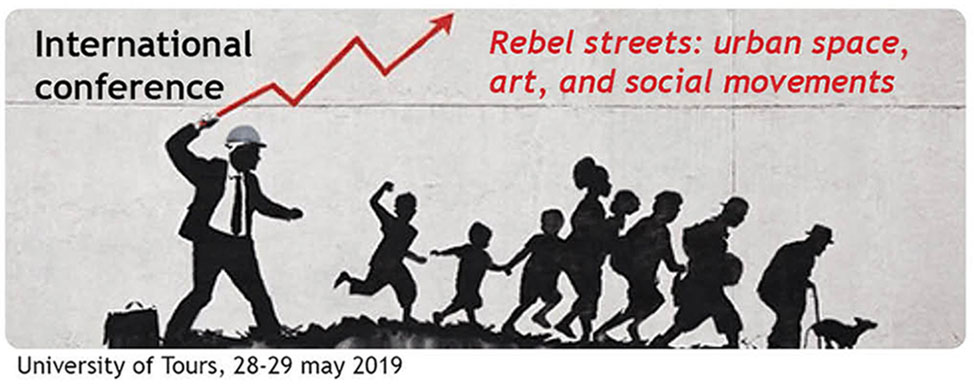
|
|
|
PresentationRebel Streets Conference is the result of a research project entitled "La rue et l'art : l'espace urbain, l'art et les mouvements sociaux à l’ère du néolibéralisme" (Street and Art: Urban Space, Art and Social Movements in the Era of Neoliberalism) funded by Maison de Science de l'Homme Val de Loire (MSH Val de Loire) and leaded by Gülçin Erdi and Tijen Tunali. Rebel Streets conference aims to shift the focus from a rather disempowering critical perspective towards urban art to one that stresses its aesthetical and political powers as a part of the urban social resistance. We ask participants to investigate the hypothesis that the aesthetic reconfiguration of the neoliberal city does not only allow for a hegemonic restructuring of the urban environment, but it also facilitates the growth of counter-hegemonic resistance.
Rebel Streets conference will engage in the questions that scrutinize the complex relationships between urban space, social resistance and art, such as: How can art in the public space be used as a weapon of resistance and a means of reconstruction? Are street artists obliged to be a part of the urban resistance against neoliberalism? How does art respond uniquely to gentrification? How do public artistic expressions reveal, delimit or question the complexity of neoliberal urbanization? How can we interpret the poetics of urban art from the perspective of subcultures, freedom of expression, and the limits of criminality? How is street art activism perceived by the authorities, politicians, businesses, and the wider public? What prompts urban artists to communicate with urban dwellers with their marks on the city’s surface? What kind of public should critical urban art try to constitute and what kind of public spaces are needed to that effect? What can we learn from urban art about visual resistance in the interplay with political power structures? Under what conditions could art become effective in reclaiming the cities as sites of resistance and change?
|

